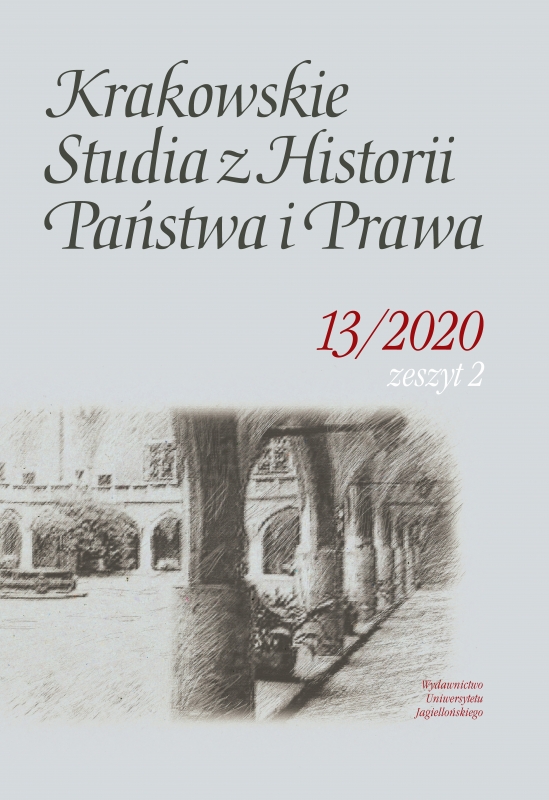Sądownictwo dominialne w dobrach koprzywnickiego klasztoru cystersów do 1819 r. Wybrane zagadnienia
Dominial Jurisdiction in the Demesne of the Cistercian Monastery in Koprzywnica until 1819: Selected Issues
Author(s): Zdzisław ZarzyckiSubject(s): History of Law
Published by: Wydawnictwo Uniwersytetu Jagiellońskiego
Keywords: klasztor cystersów w Koprzywnicy; sądownictwo dominialne opata; przywileje i immunitety lokacyjne; immunitety sądowe ; the Cistercian Monastery in Koprzywnica; the abbot’s dominial jurisdiction; privi
Summary/Abstract: Dominial jurisdiction in the demesne of the Cistercian Monastery in Koprzywnica underwent a long and complicated evolution from the foundation of the abbey in 1185 to its dissolution in 1819. For over 6 centuries this monastery owned the town of Koprzywnica all the time, and the towns of Jasło and Frysztak temporarily and almost 60 villages and their parts in different periods. Privileges and judicial immunities granted by the ruling monarchs (in 1262, 1267, 1284, 1308, 1360 and later) were of a fundamental importance for development of the dominial jurisdiction of the abbot of Koprzywnica. A kind of exception in the organization of the dominial jurisdiction was the self-governmental structure in the town of Koprzywnica located under German Law (Magdeburg Law) under the privilege of the Duke Bolesław V the Chaste in 1267. However, the abbot did not like the independent judicial position of the head of the commune in Koprzywnica and village representatives in the monastery villages. The head of the commune and village representatives were often confidants for inhabitants’ matters, from where they came from rather than interests of the abbot or the monastery. These circumstances were, among others, the reason that at the turn of the 14th and the 15th centuries the monastery authorities brought to annihilation of self-governmental jurisdiction in their demesne and introduced judges-clerks completely controlled by them. It was the institution of a judicial head of a commune. The abbot’s subjects were not pleased with such a solution. They complained about the judicial activity of the abbot and his clerks even to the king himself. Most often ineffectively. In principle, this state of affairs lasted until the judicial reforms at the turn of the 18th and 19th centuries. At that time the Austrian state authorities and the authorities of the Duchy of Warsaw, following the movement of the Enlightenment, allowed to replace the dominial jurisdiction of the abbot and his clerks with the independent state courts (and judges). Yet, the transformation process of this dominial jurisdiction into the common one was not completed because the monastery in Koprzywnica was dissolved by the Russian authorities in 1819.
Journal: Krakowskie Studia z Historii Państwa i Prawa
- Issue Year: 13/2020
- Issue No: 2
- Page Range: 121-151
- Page Count: 31
- Language: Polish

